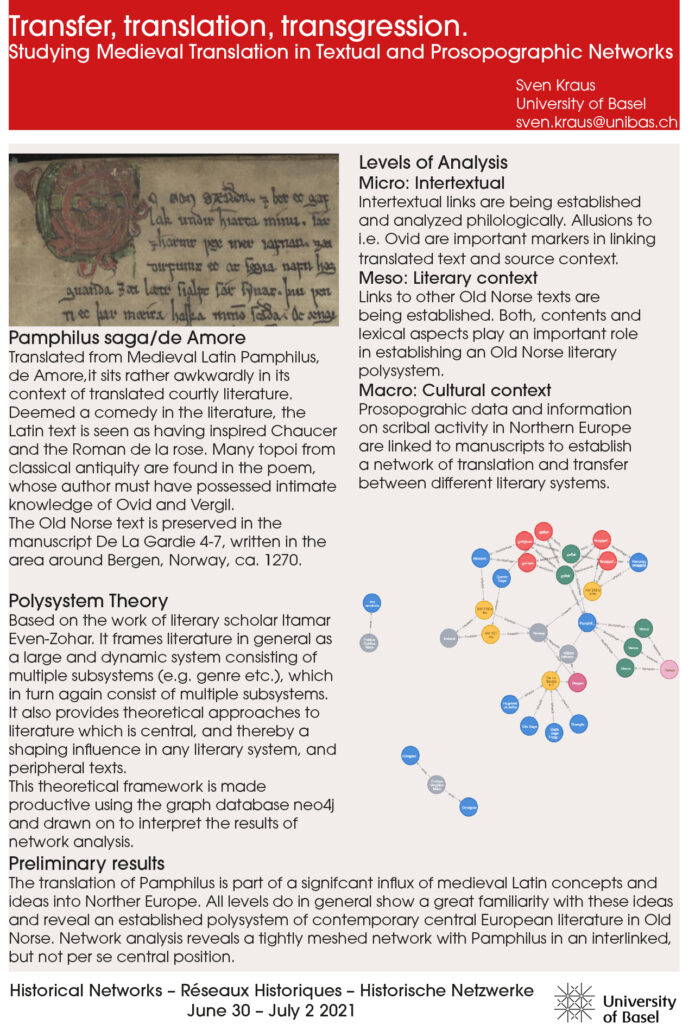Sven Kraus
Time and Place: Thursday, 01.07., 16:00–17:00, Room 4
Session: Poster Session
Keywords: Translation Studies; Textual Networks; Medieval Studies; Cultural Networks; Old Norse Studies; Medieval Latin
In the middle of the 13th century, Pamphilus, on of the most prolific texts of the middle ages and hence nearly forgotten, was translated from its original Medieval Latin into Old Norse. The translation is preserved only in the manuscript De La Gardie 4-7 (today Uppsala University Library), which contains other translated works besides Pamphilus, all translated from Medieval Latin or Old French. The manuscript as a whole and particularly Pamphilus by means of time, contents and context, are the product of a learned discourse that also places the text and the manuscript in a vast European net-work of ideas and knowledge.
This poster presents the current state of an ongoing PhD dissertation, the aim of which is to reconstruct and study the aforementioned network. To this end, the different Latin versions and the Old Norse translation of the Pamphilus are in a first step fed into the graph database system neo4j and parallelized manually. The parallelization is the basis for the further analyses, which will include additional Latin texts and data on organizations and individuals linked to different places and manuscript witnesses. Taken together, these data will allow for a network based analysis of the transfer and trans-mission of the Latin text to Northern Europe.The translation itself is being studied using polysystem theory. Textual and inter-textual networks play a crucial role in identifying patterns in the practice of the translator. By analzing the occurrence of a specific set of lexemes across the pre-1300 Old Norse corpus, I am working to establish the context of the translation in the Old Norse literary space.
The poster will illustrate how network analysis and translation studies can complement each other. Seeing the translation effort as the product of an intellectual net-work, studying the translation closely can generate new insight into possible hierarchies in the case at hand. At the same time, understanding the dynamics of the net-work will add considerable depth to the understanding of the translation, providing a framework of interpretation for the study of the translation.
